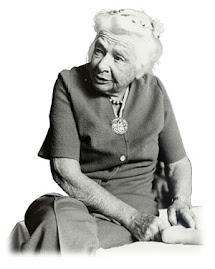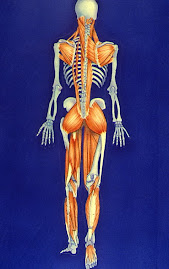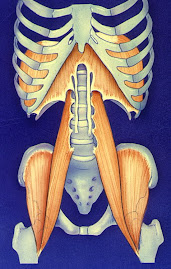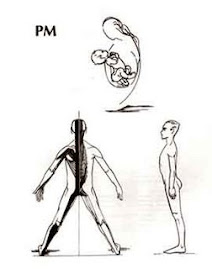Esta é uma carta escrita em inglês porque foi submetida a uma revista. Ao que parece, o seu revisor, penso que um médico fisiatra, mas profundamente ignoto, não gostou e rejeitou a "Carta ao Editor". Deixo-a à vossa avaliação.
-----------------
Dear Editor,
Some doctors don’t know what is the real power of the physical therapy’s approach of the rheumatological diseases. In fact, rheumatological physical therapy acts in a lot of clinical conditions, including the immunologic ones and even arthritis. There are diverse methods inside physical therapy, but there is also some ignorance about them. But the real reason about this letter is to talk about the problematic of the existence of a lot of rehabilitation methods, based in different concepts and theoretical paradigms, and the relation about that diversity and some danger in the treatment of different clinical conditions.
The fact is that we can divide the physical therapy methods in two major groups: the anti-symptomatic methods and the holistic methods. The first ones are all the approaches that acts in the proper symptoms of the patient; it includes physical agents, electrotherapy and massage. The holistic methods are all the approaches that concern with the global aspects of the patient; these methods include diverse osteopathy techniques, chiefly rolfing (1), and the postural approaches, including Pilates. The postural approaches that are truly holistic are all the ones that came from French tradition: the techniques based on Mézières’ postural re-education method (2, 3). So, Inside the Mézières’ method, the Coelho’s book (4), titled “Anti-fitness ou o manifesto anti-desportivo. Introdução ao conceito de Reeducação Postural”, talks about a lot of “neo-mézièrists methods”, that are: Bertherat’s “anti-gymnastique”, Godelieve Denys-Struyf’s “Muscular and Articular Chains”, Peyrot’s “morphoanalysis”, Ph-E Souchard’s “Global Postural Re-education” and “Active Global Stretching”, Busquet’s “Muscular Chains” and Nisand’s “Postural Reconstruction”. All that methods are considered “holistic” because they have in account a “global muscular system” as constituted as “muscular chains”. The treatment is based on global stretching postures and the Theory is based in the tonic vs. dynamic muscles’ kind of differentiation (Pilates can’t be considered a real kind of re-education’s method because it isn’t based on that theoretical muscular differentiation).
Between the “anti-symptomatic methods” and the “holistic approaches” we can include another kind of approaches that are some “manual therapy” methods. Petty and Moore (5) name the following authors: Maitland, Butler, Cyriax, Edwards, Elvey, Janda, Jull & Janda, Jull & Richardson, Kaltenborn, Lee, McConnell, McKenzie, Mulligan, Travell & Simons and White & Sahrmann.
All the methods that we have referred can be used in a lot of clinical conditions. However, physical therapists usually believe that “anti-symptomatic methods” are most important to treat the condition in the “present time” (the condition’s clinical signals), while the “holistic methods” are most important to treat the cause of the condition. But, in fact, there are no objective criterions about the pertinence of using one method, avoiding others. What it usually happens is that different therapists prefer different methods, and that choices are more subjectivist than it could be though. But, in reality, choosing one specific method and avoiding other approach can be dangerous for the patient, in some kind of conditions.
Usually the inflammatory conditions must be treated with “anti-symptomatic methods” and only when the condition is a-symptomatic we must use the postural re-education’s methods (the manual therapy can be used with poor symptoms, in sub-acute conditions). But the clinical reality is more stubborn that it must be, because there is a tendency to therapists being loyal to a specific paradigm, avoiding the use of others techniques (from a different paradigm). This attitude can transform itself in radicalism, and that is dangerous to the patient. For example, “postural re-education” is most important to treat chronic low back pain, but if this pain is caused by a disc herniation, the “flexion postures” of the Mézières’ method can be very pernicious to its biomechanical mechanism. So, the extension exercises from Maitland, Cyriax or McKenzie are more useful in these conditions, principally if sciatic pain is present. (The last ones are, in fact, must more scientifical than the first ones; in another side, the first ones are more theoretical. And these facts can explain some methodological choices of the therapist…)
There are a lot of examples that show that any kind of “paradigm blindness” can be dangerous for the patient. And all the discussion about the “truth”, in a Karl Popper’s perspective, is urgent. In fact, the physical therapy’s methods reveal the urgency of discuss the paradigms’ theme, in a scientifical perspective. This discussion trends us to the importance of knowing the epistemology of the paradigms of Thomas Kuhn and the “epistemis” of Michel Foucault. Because there are very “truths” or diverse perspectives of the “truth”, this kind of discussion relieve us to the pos-modernism dimension of Clinics. Well, in reality, the diverse existent physical therapists are completely ignorant about this kind of thematic. So, how can be possible Physical Therapy have the necessary flexibility or clinical eclectic view?…
Dear Editor,
Some doctors don’t know what is the real power of the physical therapy’s approach of the rheumatological diseases. In fact, rheumatological physical therapy acts in a lot of clinical conditions, including the immunologic ones and even arthritis. There are diverse methods inside physical therapy, but there is also some ignorance about them. But the real reason about this letter is to talk about the problematic of the existence of a lot of rehabilitation methods, based in different concepts and theoretical paradigms, and the relation about that diversity and some danger in the treatment of different clinical conditions.
The fact is that we can divide the physical therapy methods in two major groups: the anti-symptomatic methods and the holistic methods. The first ones are all the approaches that acts in the proper symptoms of the patient; it includes physical agents, electrotherapy and massage. The holistic methods are all the approaches that concern with the global aspects of the patient; these methods include diverse osteopathy techniques, chiefly rolfing (1), and the postural approaches, including Pilates. The postural approaches that are truly holistic are all the ones that came from French tradition: the techniques based on Mézières’ postural re-education method (2, 3). So, Inside the Mézières’ method, the Coelho’s book (4), titled “Anti-fitness ou o manifesto anti-desportivo. Introdução ao conceito de Reeducação Postural”, talks about a lot of “neo-mézièrists methods”, that are: Bertherat’s “anti-gymnastique”, Godelieve Denys-Struyf’s “Muscular and Articular Chains”, Peyrot’s “morphoanalysis”, Ph-E Souchard’s “Global Postural Re-education” and “Active Global Stretching”, Busquet’s “Muscular Chains” and Nisand’s “Postural Reconstruction”. All that methods are considered “holistic” because they have in account a “global muscular system” as constituted as “muscular chains”. The treatment is based on global stretching postures and the Theory is based in the tonic vs. dynamic muscles’ kind of differentiation (Pilates can’t be considered a real kind of re-education’s method because it isn’t based on that theoretical muscular differentiation).
Between the “anti-symptomatic methods” and the “holistic approaches” we can include another kind of approaches that are some “manual therapy” methods. Petty and Moore (5) name the following authors: Maitland, Butler, Cyriax, Edwards, Elvey, Janda, Jull & Janda, Jull & Richardson, Kaltenborn, Lee, McConnell, McKenzie, Mulligan, Travell & Simons and White & Sahrmann.
All the methods that we have referred can be used in a lot of clinical conditions. However, physical therapists usually believe that “anti-symptomatic methods” are most important to treat the condition in the “present time” (the condition’s clinical signals), while the “holistic methods” are most important to treat the cause of the condition. But, in fact, there are no objective criterions about the pertinence of using one method, avoiding others. What it usually happens is that different therapists prefer different methods, and that choices are more subjectivist than it could be though. But, in reality, choosing one specific method and avoiding other approach can be dangerous for the patient, in some kind of conditions.
Usually the inflammatory conditions must be treated with “anti-symptomatic methods” and only when the condition is a-symptomatic we must use the postural re-education’s methods (the manual therapy can be used with poor symptoms, in sub-acute conditions). But the clinical reality is more stubborn that it must be, because there is a tendency to therapists being loyal to a specific paradigm, avoiding the use of others techniques (from a different paradigm). This attitude can transform itself in radicalism, and that is dangerous to the patient. For example, “postural re-education” is most important to treat chronic low back pain, but if this pain is caused by a disc herniation, the “flexion postures” of the Mézières’ method can be very pernicious to its biomechanical mechanism. So, the extension exercises from Maitland, Cyriax or McKenzie are more useful in these conditions, principally if sciatic pain is present. (The last ones are, in fact, must more scientifical than the first ones; in another side, the first ones are more theoretical. And these facts can explain some methodological choices of the therapist…)
There are a lot of examples that show that any kind of “paradigm blindness” can be dangerous for the patient. And all the discussion about the “truth”, in a Karl Popper’s perspective, is urgent. In fact, the physical therapy’s methods reveal the urgency of discuss the paradigms’ theme, in a scientifical perspective. This discussion trends us to the importance of knowing the epistemology of the paradigms of Thomas Kuhn and the “epistemis” of Michel Foucault. Because there are very “truths” or diverse perspectives of the “truth”, this kind of discussion relieve us to the pos-modernism dimension of Clinics. Well, in reality, the diverse existent physical therapists are completely ignorant about this kind of thematic. So, how can be possible Physical Therapy have the necessary flexibility or clinical eclectic view?…
References
Rolf I. Rolfing: Integration of human structures. 1977.
Mézières F. La gymnastique statique. Paris: Vuibert, 1947.
Mézières F. La révolution en gymnastique orthopédique. Paris: Vuibert, 1949.
Coelho L. O anti-fitness ou o manifesto anti-desportivo. Introdução ao conceito de reeducação postural. Quinta do Conde: Contra-Margem, 2008.
Petty N, Moore A. Neuromusculoskeletal examination and assessment. A handbook for therapists. London: Churchill Livingstone, 1998.
































.jpg)




Sem comentários:
Enviar um comentário